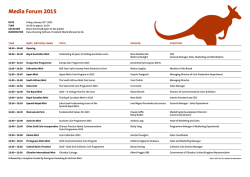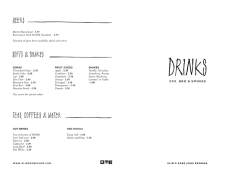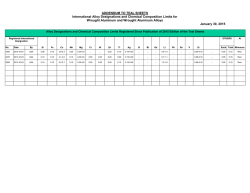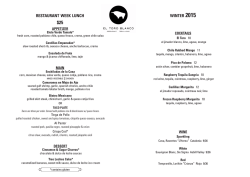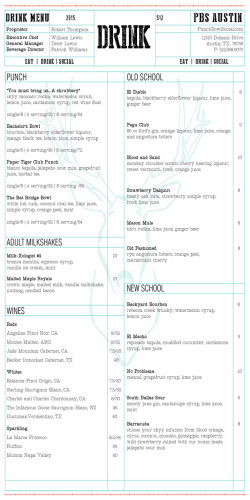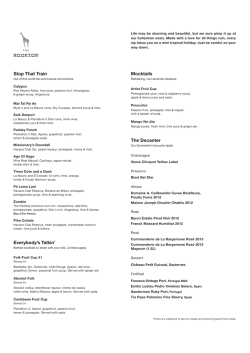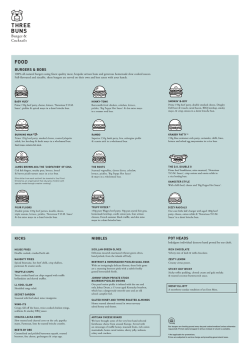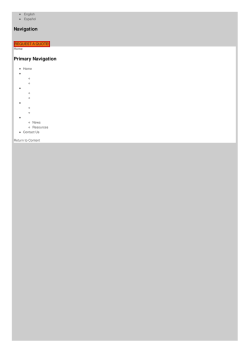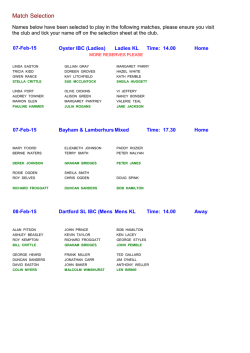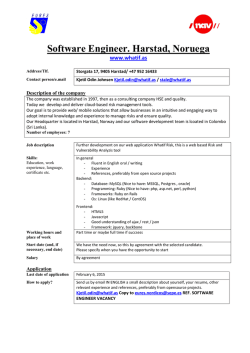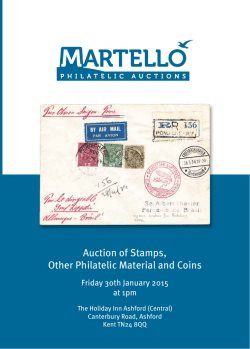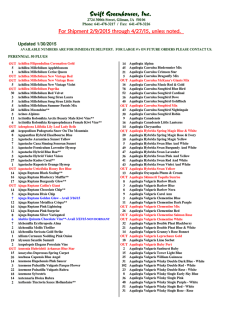
Midterm: Fall 2011 - Princeton University
COS 226
Algorithms and Data Structures
Fall 2011
Midterm
This test has 9 questions worth a total of 60 points. You have 80 minutes. The exam is closed
book, except that you are allowed to use a one page cheatsheet. No calculators or other electronic
devices are permitted. Give your answers and show your work in the space provided. Write out
and sign the Honor Code pledge before turning in the test.
“I pledge my honor that I have not violated the Honor Code during this examination.”
Problem Score
0
1
2
3
4
Sub 1
Problem Score
5
6
7
8
Name:
Login ID:
Precept:
P01
P01A
P02
P02A
P03
P03A
Sub 2
Total
1
11
11
12:30
12:30
1:30
1:30
Maia Ginsburg
Aman Dhesi
Sasha Koruga
Joey Dodds
Maia Ginsburg
Joey Dodds
2
PRINCETON UNIVERSITY
0. Miscellaneous. (1 point)
In the space provided on the front of the exam, write your name and Princeton NetID; circle
your precept number; and write and sign the honor code.
1. Union find. (6 points)
Circle the letters corresponding to arrays that cannot possibly occur during the execution of
weighted quick union.
i:
A.
a[i]:
0 1 2 3 4 5 6 7 8 9
---------------------------1 2 3 0 1 1 1 4 4 5
B.
a[i]:
9
0
0
0
0
0
9
9
9
9
C.
a[i]:
1
2
3
4
5
6
7
8
9
9
D.
a[i]:
0
0
0
0
0
1
1
1
6
2
E.
a[i]:
0
0
0
0
0
1
1
1
6
8
F.
a[i]:
0
0
0
1
1
3
3
7
7
7
2. Analysis of algorithms. (6 points)
Suppose that you collect the following timing data for a program as a function of the input
size N .
N
time
125
0.03 sec
1,000
1.00 sec
8,000
32.00 sec
64,000
1,024.00 sec
512,000
32,768.00 sec
Estimate the running time of the program (in seconds) as a function of N and use tilde
notation to simplify your answer.
Hint: recall that logb a = lg a/ lg b.
COS 226 MIDTERM, FALL 2011
3
3. Data structures. (9 points)
Suppose that the Java library java.util.LinkedList is implemented using a doubly-linked
list, maintaining a reference to the first and last node in the list, along with its size.
public class LinkedList<Item> {
private Node first;
private Node last;
private int N;
private class Node {
private Item item;
private Node next, prev;
}
...
// the first node in the linked list
// the last node in the linked list
// number of items in the linked list
// the item
// the next and previous nodes
}
(a) Using the 64-bit memory cost model from the textbook, how much memory (in bytes)
does a Node object use and how much does a LinkedList object use to store N items?
Do not include the memory for the items themselves but do include the memory for the
references to them.
• Memory of a Node:
• Memory of a LinkedList with N items:
(b) What is the order of growth of the worst-case running time of each of operation below?
Write down the best answer in the space provided, using one of the following possibilities.
√
1
log N
N
N
N log N
N2
addFirst(item)
prepend the item to the beginning of the list
get(i)
return the item at position i in the list
set(i, item)
replace position i in the list with the item
removeLast()
delete and return the item at the end of the list
contains(item)
is the item in the list?
4
PRINCETON UNIVERSITY
4. 8 sorting and shuffling algorithms. (8 points)
The column on the left is the original input of strings to be sorted or shuffled; the column
on the right are the string in sorted order; the other columns are the contents at some
intermediate step during one of the 8 algorithms listed below. Match up each algorithm by
writing its number under the corresponding column. Use each number exactly once.
navy
plum
coal
jade
blue
pink
rose
gray
teal
ruby
mint
lime
silk
corn
bark
wine
dusk
leaf
herb
sage
cafe
mist
pine
palm
---0
coal
jade
navy
plum
blue
gray
pink
rose
lime
mint
ruby
teal
bark
corn
silk
wine
dusk
herb
leaf
sage
cafe
mist
palm
pine
----
(0) Original input
(1) Sorted
(2) Selection sort
(3) Insertion sort
corn
mist
coal
jade
blue
cafe
herb
gray
leaf
dusk
mint
lime
bark
navy
silk
wine
ruby
teal
rose
sage
pink
plum
pine
palm
----
blue
gray
rose
mint
lime
navy
jade
teal
coal
ruby
plum
pink
silk
corn
bark
wine
dusk
leaf
herb
sage
cafe
mist
pine
palm
----
blue
coal
gray
jade
lime
mint
navy
pink
plum
rose
ruby
teal
bark
corn
dusk
leaf
silk
wine
cafe
herb
mist
palm
pine
sage
----
blue
coal
corn
gray
jade
lime
mint
navy
pink
plum
rose
ruby
silk
teal
bark
wine
dusk
leaf
herb
sage
cafe
mist
pine
palm
----
wine
teal
silk
plum
sage
pink
rose
jade
navy
ruby
pine
palm
coal
corn
bark
gray
dusk
leaf
herb
blue
cafe
mist
mint
lime
----
bark
blue
cafe
coal
corn
dusk
gray
herb
jade
leaf
lime
mint
silk
plum
navy
wine
pink
ruby
rose
sage
teal
mist
pine
palm
----
mist
coal
jade
blue
cafe
herb
gray
leaf
dusk
mint
lime
bark
corn
navy
wine
silk
ruby
teal
sage
rose
pink
pine
palm
plum
----
bark
blue
cafe
coal
corn
dusk
gray
herb
jade
leaf
lime
mint
mist
navy
palm
pine
pink
plum
rose
ruby
sage
silk
teal
wine
---1
(4) Mergesort
(top-down)
(7) Quicksort
(3-way, no shuffle)
(5) Mergesort
(bottom-up)
(8) Heapsort
(6) Quicksort
(standard, no shuffle)
(9) Knuth shuffle
COS 226 MIDTERM, FALL 2011
5
5. Binary heaps. (6 points)
(a) Consider the following binary tree representation of a max-heap.
Y
H
X
G
T
F
B
C
Q
A
R
Give the array representation of the heap.
0
-
1
2
3
4
5
6
7
8
9
10
11
12
-
(b) Insert the key P into the binary heap above, circling any entries that changed.
0
-
1
2
3
4
5
6
7
8
9
10
11
12
(c) Adelete-the-max operation in the binary heap at left results in the binary heap at right.
Z
Y
R
Y
L
A
U
K
H
N
K
L
?
G
R
U
?
A
K
H
N
K
G
Which of the keys below could be the one labeled with a question mark?
Circle all possibilities.
A
B
C
D
E
F
G
H
I
J
K
L
M
N
O
P
Q
R
S
T
U
V
W
X
Y
Z
6
PRINCETON UNIVERSITY
6. Red-black BSTs. (8 points)
Consider the following left-leaning red-black BST. Some of the colors and key values are
suppressed.
P
red link
Y
F
N
C
A
E
I
O
G
Z
S
W
Q
?
L
K
(a) Which of the keys below could be the one labeled with a question mark?
Circle all possibilities.
A
B
C
D
E
F
G
H
I
J
K
L
M
N
O
P
Q
R
S
T
U
V
W
X
Y
(b) For each link from the left-hand column, select its possible color(s) from the right-hand
column.
−−−−
link between W and S
A. red
−−−−
link between ? and W
B. black
−−−−
link between S and Y
C. either red or black
−−−−
link between Q and S
(c) How many left rotation, right rotation, and color flip operations would be used to insert
each key below into the original red-black BST above?
H
rotateLeft()
1
rotateRight()
0
flipColors()
0
D
B
J
Z
COS 226 MIDTERM, FALL 2011
7
7. Comparing two arrays of points. (8 points)
Given two arrays a[] and b[], each containing N distinct points in the plane, design two
algorithms (with the performance requirements specified below) to determine whether the
two arrays contains precisely the same set of points (but possibly in a different order).
For each algorithm, give a crisp and concise English description of your algorithm.
Your answer will be graded on correctness, efficiency, and clarity.
(a) Design an algorithm for the problem whose running time is linearithmic in the worst
case and uses at most constant extra space.
(b) Design an algorithm for the problem whose running time is linear under reasonable
assumptions and uses at most linear extra space. Be sure to state any assumptions that
you make.
8
PRINCETON UNIVERSITY
8. Stabbing count queries. (8 points)
Given a Fall
collection
Midterm,
2011 of x-intervals and a real value x, a stabbing count query is the number of
intervals that contain x. Design a data structure that supports interval insertions intermixed
with stabbing count queries by implementing the following API:
public class IntervalStab
IntervalStab()
void insert(double xmin, double xmax)
int count(double x)
create an empty data structure
insert the interval (xmin, xmax)
into the data structure
number of intervals
that contain x
For example, after inserting the five intervals (3, 10), (4, 5), (6, 12), (8, 15), and (19, 30) into
the data structure, count(9.1) is 3 and count(17.2) is 0.
If there are N intervals in the data structure, you should support insert and count in time
proportional to log N in the worst case (even if count() returns N ).
For simplicity, assume that no two intervals contain a left or right endpoint in common and
that the argument to the stabbing count query is not equal to a left or right endpoint.
Give a crisp and concise English description of your data structure.
Your answer will be graded on correctness, efficiency, and clarity.
3
• IntervalStab():
• insert(xmin, xmax):
• count(x):
© Copyright 2025
